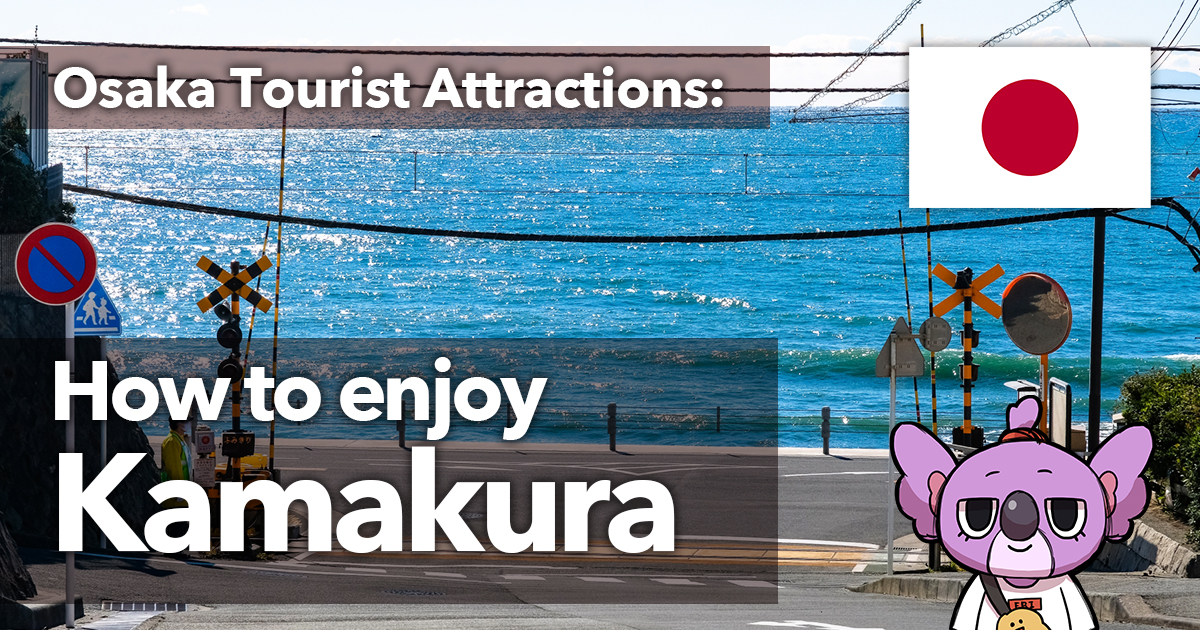Introduction
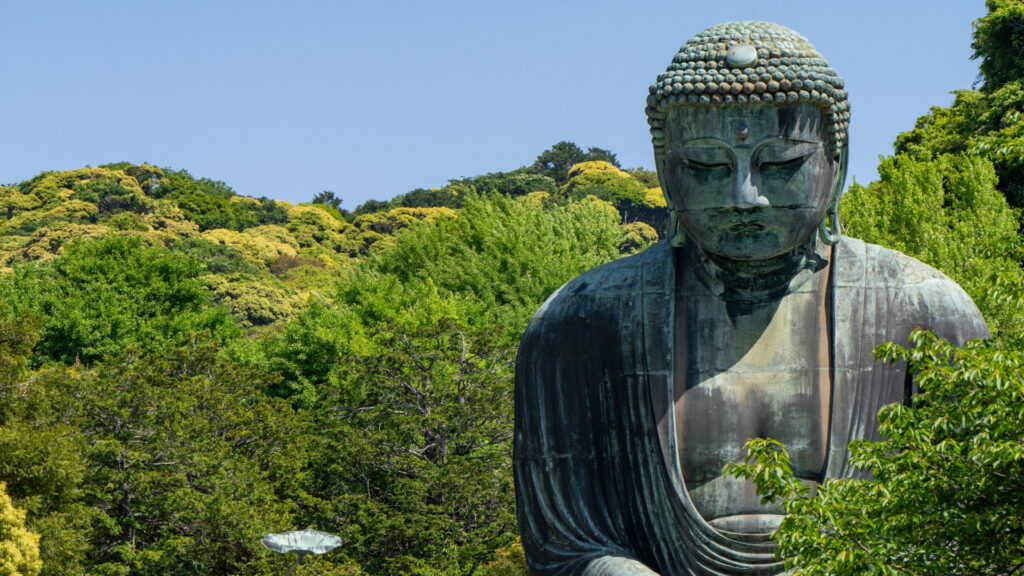
Kamakura, located in Kanagawa Prefecture, is a beautiful tourist destination that combines history and nature. with its historical background of the Kamakura Shogunate, which flourished as the political and cultural center of Japan from the late 12th to the early 14th century, the city is dotted with many ancient temples and historic sites. Kamakura is also known as the “Kyoto of the East” for its rich cultural heritage and natural beauty.
Kamakura’s greatest appeal is its concentration of diverse tourist attractions. From historical landmarks such as the Great Buddha of Kamakura and Tsurugaoka Hachimangu Shrine to hiking trails surrounded by lush greenery and the beautiful coastline, visitors will never get bored. The scenery changes from season to season, so no matter what season you visit, you will always have something new to discover.
Kamakura is also famous for its delicious gourmet food. Restaurants and cafes using fresh local ingredients line the streets, and dishes using Kamakura vegetables and seafood dishes are especially popular. Eating in Kamakura will enrich your enjoyment of sightseeing.
Access is also very convenient, with only about an hour from Tokyo by train, making it ideal for a day trip. Sightseeing spots are clustered around Kamakura Station, and you can get around efficiently on foot or by renting a bicycle. There are also sightseeing spots such as Enoshima and Zushi in the vicinity of Kamakura, which can be visited together for an even more fulfilling trip.
This article introduces all of Kamakura’s attractions and provides useful information for planning your sightseeing tour. From historical sights and nature to dining spots and accessibility information, we hope you will find this information useful as it will assist you in having a wonderful experience in Kamakura. Your visit to Kamakura will make your trip even more special.
History and Culture of the Sightseeing Spot
Kamakura is a tourist destination in Japan known for its rich history and culture. In this section, you will learn more about Kamakura’s historical background and cultural features.
Historical Background
Kamakura became the political and cultural center of Japan when Minamoto no Yoritomo established the Kamakura shogunate at the end of the 12th century. The Kamakura Shogunate lasted for about 150 years as Japan’s first samurai government, during which time many temples and shrines were constructed. In particular, the famous Great Buddha of Kamakura and Tsurugaoka Hachimangu Shrine were built during this period and still attract many tourists today.
Kamakura was also the place where Zen Buddhism spread throughout Japan. During the Kamakura period, many Zen temples were built, spreading the idea of Zen among the warrior class. Zen temples such as Engakuji and Kenchoji still retain their serenity and beauty and offer spiritual comfort to many people.
Cultural Characteristics
Kamakura’s culture is deeply rooted in its historical background. The entire town retains its historical atmosphere, with cobblestone streets and old buildings scattered throughout. These architectural structures give visitors a sense of medieval Japan.
Kamakura is also a place where traditional Japanese culture such as tea ceremony and flower arrangement thrives. Visitors can experience the tea ceremony at many temples and tearooms, providing an excellent opportunity to experience traditional Japanese culture. Furthermore, traditional crafts such as Kamakura sculpture and Kamakura carvings are also famous, and these crafts are popular as souvenirs.
Another cultural feature of Kamakura is its festivals: many traditional festivals, such as the Kamakura Festival in April and the Tsurugaoka Hachimangu Shrine Festival in September, bring locals and tourists together. At these festivals, gorgeous costumes and traditional music and dance are performed, allowing visitors to feel close to traditional Japanese culture.
Furthermore, Kamakura is a place where nature and culture are in harmony. Surrounded by the sea and mountains, the beautiful natural environment blends with historical buildings and gardens to provide visitors with a moment of serenity. The cherry blossoms in spring, the autumn leaves in fall, and the changing scenery of the four seasons are another of Kamakura’s charms.
Kamakura is a special place filled with its rich history and culture. By learning about its historical background, you will be able to enjoy Kamakura more deeply. Visit Kamakura and enjoy its historical and cultural attractions to the fullest.
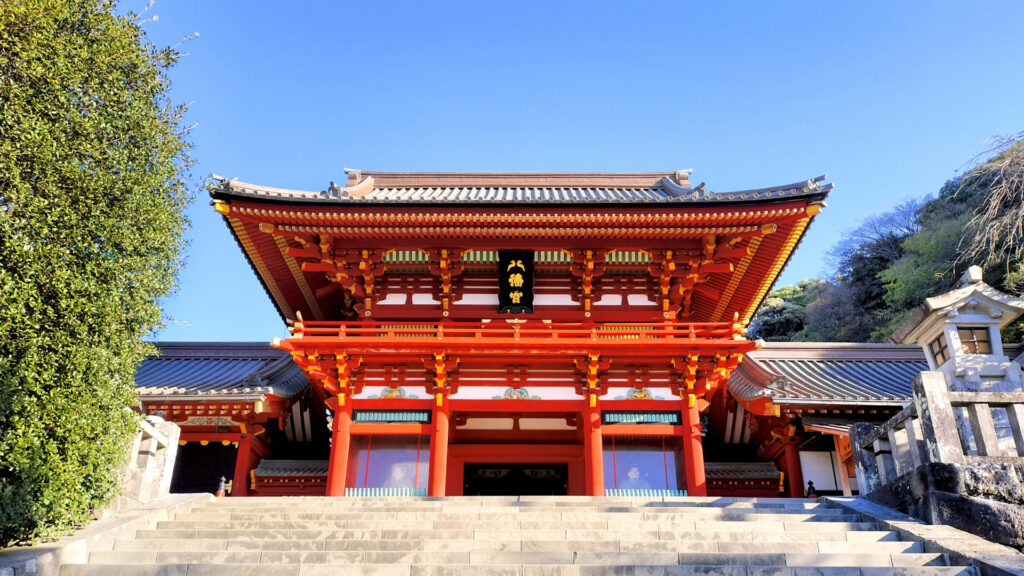
Places to visit
Kamakura is a place that attracts many tourists with its historical charm and natural beauty. Here we will introduce the best time of year to visit Kamakura, its main attractions, and what to expect when sightseeing.
Suggested times of year to visit
The best times to visit Kamakura are spring and fall. In spring (March to May), cherry blossoms are in full bloom and you can enjoy beautiful cherry blossom scenery at many tourist attractions such as Tsurugaoka Hachimangu Shrine and Hase Temple. Autumn (September to November) is the best time to see the autumn leaves, and temples and gardens dyed in autumn colors offer spectacular views. In particular, the autumn leaves of Engakuji Temple and Kenchoji Temple in the Kita-Kamakura area are not to be missed. In addition, visitors can enjoy swimming in the sea in summer and sightseeing in a quiet atmosphere in winter.
Major tourist attractions and popular spots
Kamakura is home to many historical sites and spots of natural beauty. Below are some popular spots that you should not miss when visiting.
- Kamakura Great Buddha (Kotokuin Temple): The symbol of Kamakura, the 11.4 meter tall bronze statue of Buddha is a magnificent sight against the blue sky.
- Tsurugaoka Hachimangu Shrine: This shrine is representative of Kamakura and was built by Minamoto no Yoritomo. The beautiful pond and garden are also highlights.
- Hase-ji Temple: A beautiful temple with seasonal flowers, especially during the hydrangea season, attracts many tourists. The observatory offers a spectacular view of Yuigahama Beach.
- Engakuji Temple: This Zen temple in the Kita-Kamakura area is characterized by its beautiful garden and tranquil atmosphere. The scenery is especially beautiful during the season of autumn leaves.
- Kamakura Komachi Street: A shopping street that runs from Kamakura Station to Tsurugaoka Hachimangu Shrine, where you can enjoy local delicacies and souvenirs.
- Kamakura Literature Museum: A literary museum housed in the former residence of the Marquis Maeda, the museum exhibits works and materials by writers associated with Kamakura, along with a beautiful garden.
Points to note at tourist attractions
When visiting Kamakura, keep the following tips in mind.
- Avoid crowds: Kamakura is a popular tourist destination and can be especially crowded on weekends and holidays. Consider visiting on a weekday or early in the morning to take your time and enjoy the sights.
- Wear comfortable walking shoes: Kamakura is a popular tourist destination, so it is recommended that you wear comfortable shoes for walking.
- Watch out for the weather: Since many of the activities are outdoors, please watch out for the weather and bring rain gear and warm clothing if necessary.
- Maintain good manners: When visiting shrines and temples, please be quiet and observe the rules of photography.
Kamakura offers visitors an unforgettable experience with its historical charm and natural beauty. Visit at the perfect time of year and enjoy the many sights and attractions that Kamakura has to offer.
Access
Kamakura is very conveniently accessible from Tokyo and is a popular destination for many tourists. Here we introduce how to access Kamakura from Tokyo Station, Narita Airport, and Haneda Airport.
Access from Tokyo Station
Access to Kamakura from Tokyo Station is as follows.
By train.
- JR Yokosuka Line: Take the JR Yokosuka Line from Tokyo Station to Kamakura Station, about 60 minutes. The Yokosuka Line is conveniently direct and allows you to reach Kamakura without changing trains.
- JR Shonan Shinjuku Line: Take the Shonan Shinjuku Line from Shinjuku or Shibuya Stations and get to Kamakura Station in about 1 hour. This is also a convenient direct connection.
Access from Narita Airport
Access from Narita Airport to Kamakura is as follows.
If you take the train.
- Narita Express (N’EX): Take the JR Narita Express train from Narita Airport to Yokohama Station in about 90 minutes. At Yokohama Station, transfer to the JR Yokosuka Line for a 30-minute ride to Kamakura Station. It takes about 2 hours in total.
- Keisei Skyliner and JR Line: From Narita Airport, take the Keisei Skyliner to Nippori Station (approx. 40 min.). At Nippori Station, transfer to the JR Yamanote Line for Tokyo Station. From Tokyo Station, transfer to the JR Yokosuka Line for approximately 60 minutes to Kamakura Station. The total time is approximately 2.5 hours.
**Limousine
Access
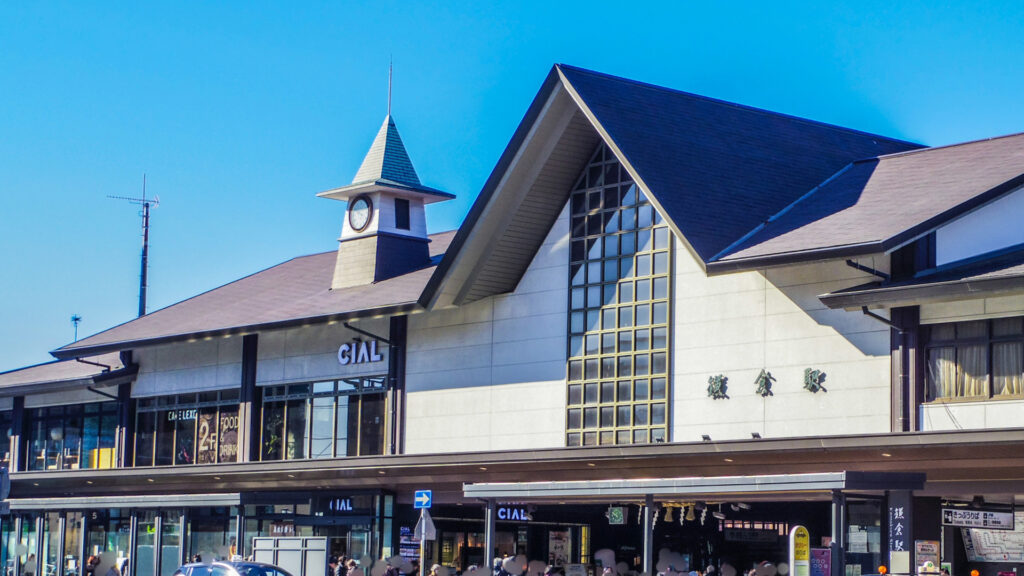
Kamakura is very conveniently accessible from Tokyo and is a popular destination for many tourists. Here we introduce how to access Kamakura from Tokyo Station, Narita Airport, and Haneda Airport.
Access from Tokyo Station
Access to Kamakura from Tokyo Station is as follows.
When using a train
- JR Yokosuka Line: Take the JR Yokosuka Line from Tokyo Station to Kamakura Station, approximately 60 minutes. The Yokosuka Line is conveniently direct and allows you to reach Kamakura without changing trains.
- JR Shonan Shinjuku Line: Take the Shonan Shinjuku Line from Shinjuku or Shibuya Stations and reach Kamakura Station in approximately 1 hour. This is also direct and convenient.
Access from Narita Airport
Access from Narita Airport to Kamakura is as follows.
If you take the train.
- Narita Express (N’EX): Take the JR Narita Express train from Narita Airport to Yokohama Station in approximately 90 minutes. At Yokohama Station, transfer to the JR Yokosuka Line for a 30-minute ride to Kamakura Station. It takes about 2 hours in total.
- Keisei Skyliner and JR Line: From Narita Airport, take the Keisei Skyliner to Nippori Station (approx. 40 min.). At Nippori Station, transfer to the JR Yamanote Line for Tokyo Station. From Tokyo Station, transfer to the JR Yokosuka Line for approximately 60 minutes to Kamakura Station. In total, it takes about 2.5 hours.
When using the Limousine Bus
- Limousine Bus: Take a limousine bus from Narita Airport to Yokohama City Air Terminal (YCAT), which takes about 90 minutes. In total, it takes about 2 hours.
Access from Haneda Airport
Access from Haneda Airport to Kamakura is as follows.
When using the train
- Keikyu Line and JR Yokosuka Line: From Haneda Airport, take the Keikyu Line Airport Express to Yokohama Station in approximately 20 minutes. At Yokohama Station, transfer to the JR Yokosuka Line for a 30-minute ride to Kamakura Station. It takes about 1 hour in total.
If you use the Limousine Bus
- From Haneda Airport, take the limousine bus to Yokohama City Air Terminal (YCAT), which takes about 30 minutes. The total time is approximately 1 hour.
Gourmet
Kamakura is known not only as a historical tourist destination, but also as a city of gastronomy. Here are some recommended dining spots and restaurants that you should definitely stop by when visiting Kamakura.
Recommended Dining and Restaurants
Japanese Cuisine
- Kamakura Miyoshi: This popular restaurant offers Kamakura’s famous “Kamakura Udon”. The firmness of the handmade udon noodles and the flavor of the broth are superb, and the seasonal specials are also very attractive.
- TOTOYA MICHI: Sushi and sashimi using fresh seafood can be enjoyed at this restaurant, where you can enjoy freshly caught local seafood. The lunch kaisen-don (fresh seafood rice bowl) is especially popular.
Yoshoku.
- Brunch Kitchen Kamakura: Located within walking distance from Kamakura Station, this café-restaurant offers breakfast, lunch, and café hours. Pancakes and eggs benedict are especially popular.
- Bistro La Porte: A bistro based on French cuisine, this restaurant features creative dishes made with fresh local ingredients. A large selection of wines is available to pair with your meal.
Cafe
- Cafe Vivemont Dimonche: A representative of Kamakura’s café culture, this restaurant offers delicious coffee and homemade sweets. It is especially crowded with people during brunch time on weekends.
- Iwata Coffee Shop: An old-fashioned coffee shop where you can relax and enjoy the history of Kamakura. The famous pancakes are fluffy and hearty.
Sweets
- Toyoshimaya: A famous dove sable store in Kamakura, where you can enjoy crispy cookies. These cookies make a great souvenir.
- Saryo Fuuka: A cafe where you can enjoy green tea sweets, rich green tea parfait and dango in a beautiful Japanese setting.
Shopping

Kamakura is famous not only as a historical tourist destination, but also as an attractive shopping spot. Here we introduce some of the best local specialties and souvenirs in Kamakura.
Recommended local specialties and souvenirs
Hato Sable.
- Toyoshimaya: Hato Sablet is a famous souvenir representing Kamakura. These cookies have a crunchy texture and buttery aroma, and are a perfect souvenir of your visit to Kamakura. Limited edition products and gift sets are available at the main Toshimaya store.
Kamakura Sculpture
- Kamakura Carving Museum: Kamakura carving is a traditional wood craft that uses carving techniques. The beautifully patterned tea utensils, trays, and accessories are highly regarded as traditional handicrafts. At the Kamakura Sculpture Museum, works of art are displayed and sold, and hands-on workshops are offered.
Kamakura Vegetables
- Kamakura Agricultural Cooperative Union Sales Stand: This is a popular local spot for purchasing fresh Kamakura vegetables. Fresh seasonal vegetables and fruits are available and make great souvenirs. Also recommended are jams, pickles, and other processed foods made from local ingredients.
Kamakura Beer
- Kamakura Beer Brewery: Kamakura Beer is a locally brewed craft beer, available in several varieties. The bottles with designs of Kamakura’s famous landmarks are especially good as souvenirs. It can be purchased at local restaurants and specialty stores.
Handmade Japanese goods
- Hase-no-ichi: Held on the third Saturday of every month, Hase-no-ichi is a market of handmade Japanese goods and artwork. Many unique products are available, and you can find one-of-a-kind souvenirs that you can only find here.
Kamakura Original Sweets
- Kamakura Beniya: Original sweets that fuse Japanese and Western flavors are popular at “Kamakura Beniya. In particular, the “Kurumikko” is a gem that offers a perfect balance of caramel and walnuts, making it a perfect souvenir.
Bamboo Craft.
- Takenoko: Bamboo crafts, a traditional craft of Kamakura, offers a variety of practical and beautiful products. Many items, such as lunch boxes, tea utensils, and interior items, take full advantage of the texture of bamboo.
Summary
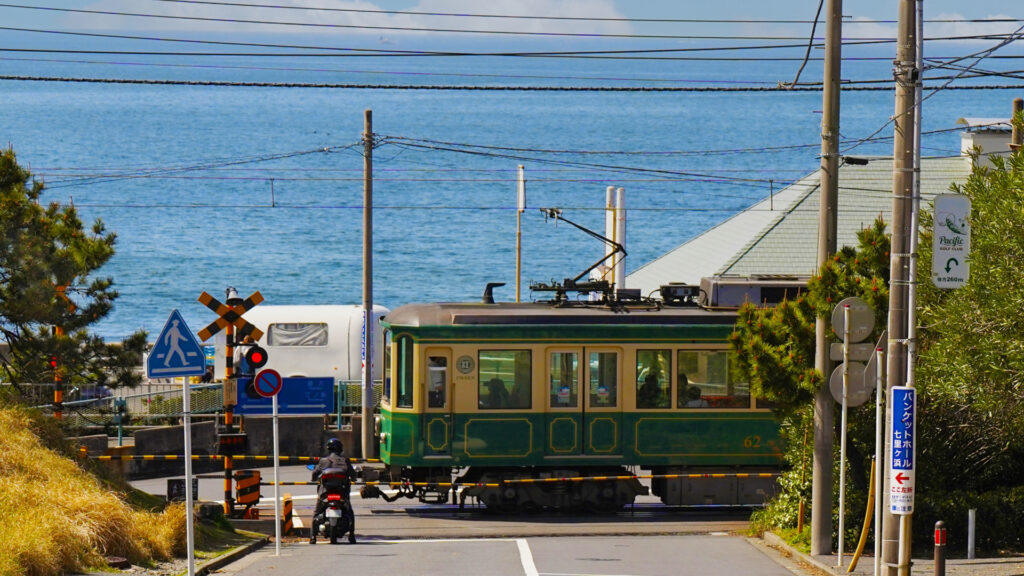
Kamakura is a beautiful tourist destination that combines history and nature, and is packed with many sights and fascinating activities. The historical background of Kamakura dates back to the end of the 12th century, when Minamoto no Yoritomo established the Kamakura shogunate, and many ancient temples and historical sites still remain in the area today. In particular, Tsurugaoka Hachimangu Shrine and the Great Buddha of Kamakura are must-sees. The best times to visit are spring and autumn, when the cherry blossoms and autumn leaves are beautiful and you can enjoy nature and history at the same time.
Kamakura is also conveniently accessible, taking approximately 60 minutes from Tokyo Station on the JR Yokosuka Line, and can be easily reached from Narita and Haneda Airports by train or limousine bus. Once there, you can efficiently explore the sightseeing spots on foot or by renting a bicycle.
Gourmet food in Kamakura is also not to be missed. Many restaurants and cafes use fresh local ingredients, and visitors can enjoy Kamakura vegetables, seafood dishes, and a variety of Japanese and Western sweets. In particular, Toshimaya’s dove sable and Kamakura beer are popular souvenirs.
Shopping is also plentiful, with a wide variety of local specialties such as Kamakura carvings, bamboo crafts, and handmade Japanese goods. In particular, fresh Kamakura vegetables can be purchased at the Kamakura City Agricultural Cooperative Union Sales Stand, where visitors can enjoy the local flavor.
Kamakura is a special place for its rich history and culture, its natural beauty, and its variety of gourmet foods and shopping. A visit will allow you to fully appreciate the unique blend of traditional and modern Japan. We hope your visit to Kamakura will make your trip even more special.

